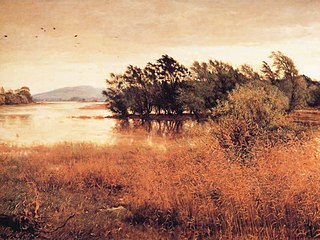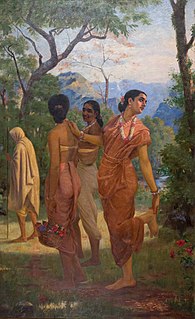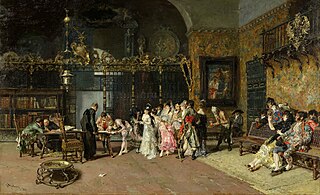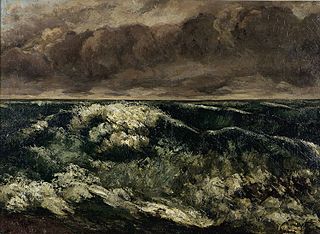 W
WBeata Beatrix is a painting completed in several versions by Pre-Raphaelite artist Dante Gabriel Rossetti. The painting depicts Beatrice Portinari from Dante Alighieri's poem La Vita Nuova at the moment of her death. The first version is oil on canvas completed in 1870.
 W
WBlack Woman with Peonies is a painting by Frédéric Bazille, produced in late spring 1870, a few months before the outbreak of the Franco-Prussian War, in which he would die. It has been in the Musée Fabre in Montpellier since 1918. It is an oil on canvas and its dimensions are 60.3 cm × 75.2 cm.
 W
WThe Boyhood of Raleigh is a painting by John Everett Millais, which was exhibited at the Royal Academy in 1871. It came to epitomise the culture of heroic imperialism in late Victorian Britain and in British popular culture up to the mid-twentieth century.
 W
WThe Brioche is a painting completed in 1870 by French artist Édouard Manet. Done in oil on canvas, the work depicts a brioche loaf resting on a table. It is in the collection of the Metropolitan Museum of Art.
 W
WChill October is an 1870 oil painting by John Everett Millais which depicts a bleak Scottish landscape in autumn. The painting measures 141.0 cm × 186.7 cm. It was the first large-scale Scottish landscape painted by Millais.
 W
WLudovic Lepic and His Daughters is a painting by Edgar Degas that was completed around 1871. The painting depicts Ludovic-Napoléon Lepic with his young daughters. Degas also depicted Ludovic Lepic in the painting Place de la Concorde.
 W
WThe Death of Messalina is an 1870 oil on canvas painting by Fernand Lematte, now in the École nationale supérieure des beaux-arts with the inventory number PRP 121 / MU 3004 de Paris.
 W
WEffect of Snow on Petit-Montrouge is an 1870 landscape painting by the French painter Édouard Manet.
 W
WThe Funeral is an 1867–1870 oil on canvas painting by Édouard Manet, now in the Metropolitan Museum of Art in New York. Incomplete, its style is very close to that of Effect of Snow on Petit-Montrouge and The Exposition Universelle of 1867. It is also known as Burial at the Glacière, the title given to it in Denis Rouart and Daniel Wildenstein's posthumous inventory of Manet's works.
 W
WThe Hatch Family is a mid 19th century painting by American artist Eastman Johnson. Done in oil on canvas, the painting depicts the Hatch Family of 19th century New York City. The titular Hatches were a family of prominent stock traders who managed Fisk and Hatch, a large brokerage firm. Johnson's painting is set in the Hatches' library, and depicts three generations of the family. Currently in the collection of the Metropolitan Museum of Art, The Hatch Family is considered on of Johnson's finest works.
 W
WHermia and Lysander is a watercolor painting created in 1870 by British illustrator and miniature portrait painter John Simmons. Based on a scene from Act II, scene II of William Shakespeare's comedy play A Midsummer Night's Dream, it measures 89 by 74 centimetres.
 W
WLa Toilette is an 1869-1870 painting by Frédéric Bazille, which has been in the Musée Fabre in Montpellier since 1968. He produced it a few months before his death in the Franco-Prussian War in 1870.
 W
WMadame Clémentine Valensi Stora (L'Algérienne) is an oil painting by Pierre-Auguste Renoir, completed in 1870. It depicts a young Jewish woman, Rebecca Clémentine Stora, in Algerian costume and is untypical of Renoir's work, leading to debate about the place of the painting within his oeuvre. Renoir and Stora both later repudiated the work.
 W
WLa Promenade is an oil on canvas, early Impressionist painting by the French artist Pierre-Auguste Renoir, created in 1870. The work depicts a young couple on an excursion outside of the city, walking on a path through a woodland. Influenced by the rococo revival style during the Second Empire, Renoir's La Promenade reflects the older style and themes of eighteenth-century artists like Jean-Honoré Fragonard and Jean-Antoine Watteau. The work also shows the influence of Claude Monet on Renoir's new approach to painting.
 W
WPuget Sound on the Pacific Coast is an 1870 oil landscape painting by the Hudson River School artist Albert Bierstadt. At the time of the work's completion, Bierstadt had not yet traveled to what was then Washington Territory. The work, commissioned by China trade merchant Abiel Abbot Low, was painted solely by written description of the Sound.
 W
WSalomé is a 19th-century painting by French artist Henri Regnault. Done in oil on canvas, the work depicts the biblical character Salome. The work debuted in the Paris salon of 1870, several months before Regnault was killed in the Franco-Prussian War. The work is currently in the collection of the Metropolitan Museum of Art.
 W
WShakuntala or Shakuntala looking for Dushyanta is an epic painting by celebrated Indian painter, Raja Ravi Varma.
 W
WThe Spanish Wedding or La Vicaría (1868-1870) is a masterwork by Marià Fortuny i Marsal, also known as Marià Fortuny or Mariano Fortuny. La Vicaría exemplifies genre painting of the 19th century. The use of jewel tones, contrasts between light and dark, and the virtuosity of the work attest to Fortuny's talent. It resides at Museu Nacional d'Art de Catalunya in Barcelona, Spain.
 W
WSplendid Mountain Watercolours or Splendid Mountain Sketchbook is a collection of sketches and watercolors by John Singer Sargent (1856–1925), executed when he was fourteen years old, and on a summer excursion to Switzerland’s Bernese Alps in the Berner Oberland in 1870. The sketchbook contains 60 leaves, including 14 watercolors and 47 crayon or graphite studies of the mountains, landscapes and people he encountered while traveling with his family.
 W
WStill Life with Ham is a mid-19th century still life painting by French artist Philippe Rousseau. Done in oil on canvas, the painting depicts a number of items set on a table. The work is currently in the collection of the Metropolitan Museum of Art.
 W
WA Studio at Les Batignolles is a painting by Henri Fantin-Latour created in 1870. The work is now at the Musée d'Orsay.
 W
WStudio in Rue de La Condamine or Bazille's Studio is an 1870 painting by the French artist Frédéric Bazille. An early Impressionist work, it has been in the Musée d'Orsay in Paris since 1986.
 W
WTivoli is a 19th-century painting by American artist Sanford Robinson Gifford. Done in oil on canvas, the work depicts a sunlit day in the town of Tivoli in Italy. The view of the town, the Aniene River, and surrounding valley was described by Gifford as “one of the finest views in the world”. The painting, which is in the collection of the Metropolitan Museum of Art, was produced for noted New York art collector Robert Gordon.
 W
WIn 1870, Irish Australian artist William Handcock completed a portrait of Tom Wills, Australia's pre-eminent cricketer of the mid-19th century and one of the key founders of Australian rules football. It is unknown who commissioned the work or where it was kept after completion, but in 1923 it was acquired by the Melbourne Cricket Club through its then-secretary, Test cricket great Hugh Trumble.
 W
WThe Trout Pool is a mid 19th century painting by Worthington Whittredge. Done in oil on canvas, the painting depicts a fishing pond amid a dense forestscape. Whittredge's work is currently in the collection of the Metropolitan Museum of Art.
 W
WView of the Canal Saint-Martin is an 1870 painting by Alfred Sisley, first exhibited at the Paris Salon of 1870. It was acquired by Gaudoin or Pierre-Firmin. It was then bought by Dr Paul Gachet for 170 francs before 1883. Gachet's son owned it from 1909 onwards and donated it to the Louvre in 1951. It now hangs in the Musée d'Orsay.
 W
WThe Wave or The Waves is the title given to several seascapes painted between 1869 and 1870 by the French painter Gustave Courbet.
 W
WYoung Gypsy Woman is a painting by Kārlis Hūns from 1870. It is located in the Latvian National Museum of Art.